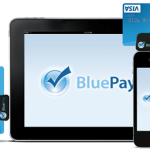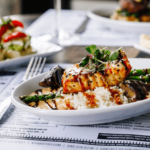When you’ve got a food truck business that’s constantly on the go, you need a payment solution that will follow your lead and equip you to give customers the flexibility and convenience that the mobile food industry is founded upon.
Here’s a look at why mobile payments are the perfect complement to food trucks.
Higher prices demand the need to accept credit.
Despite operating costs for a food truck tend to be lower than a brick-and-mortar restaurant, prices skew higher than those at fast-casual competitors. (In fact, the Silicon Valley Business Journal reports that just 8 percent of lunchtime food truck orders total less than $8.)
Though consumers may not be turned away by your prices, higher average order amounts demand that you offer customers the ability to pay with debit or credit. Mobile payments are a cost-effective means at giving consumers the payment options that suit their lives and amount of cash they have in their wallet.
It can boost your average order value.
Consumers are less price sensitive and more impulsive when using credit cards.
In fact, NerdWallet recently reported that consumers typically spend at least 12 percent more when using credit than cash; McDonald’s reportedly has an average order of $7 when consumers pay with credit, compared to the average $4.50 cash transaction.
Further, mobile payments allow customers to add a tip to their total bill.
You can react to demand.
Unpredictability is an inherent aspect of operating a mobile food truck, making flexibility a key to your revenue potential. In a traditional food service operation with a fixed location, customer demand and preference patterns emerge.
In response, inventory needs, promotions, staffing levels and pricing can all be predicted to accommodate trends and manage operating costs. When you’re a mobile food truck operator, your location and the customer demands associated with it are subject to factors that may be out of your control, including the unexpected presence of new competitors, community events, construction and weather.
When you accept mobile payments, you can react to such unexpected events in real time.
Thanks to social media, you can easily notify customers of a location change or flash promotion. Accepting mobile payments ensures you are armed to serve new and existing customers who may not have known you’d be in the area or offering a special price — even if they’re short on cash.
You can optimize your staff.
Most mobile payment providers allow processing options that you can utilize appropriately, based on demand and need. For example, you can quickly swipe credit cards to process payment using a dongle that plugs into the mobile device’s headphone jack, or use a payment processor’s mobile app to enter payment information manually.
With such options, you can also adjust your checkout processes based on wait times, staffing levels and demand. If you have a line of customers waiting outside of your truck, for example, any number of employees can accept customer payments using their mobile device to expedite the checkout process.
Such flexibility and responsiveness can mean the difference between happy customers who return and refer, and impatient customers who move on to a truck that’s more convenient.
Competition from larger players has changed the landscape.
According to the Silicon Valley Business Journal, mobile food trucks accounted for just 1 percent of total food service industry revenue in 2012.
By 2017, that number is predicted to reach 4 percent. Such rapid success has motivated larger brands like Taco Bell, Red Robin and Nabisco to seek their own piece of mobile food truck revenue.
Despite the ubiquity of their offering, the mass awareness of these brands presents a competitive threat that will force local food truck owners to try to level the playing field — including offering customers the same payment conveniences as larger chains.
—
This post was contributed by Kristen Gramigna, the Chief Marketing Officer for BluePay, a credit card processing firm, and also serves on its Board of Directors. She has more than 15 years experience in the bankcard industry and has seen the rise of the mobile payment first hand.





